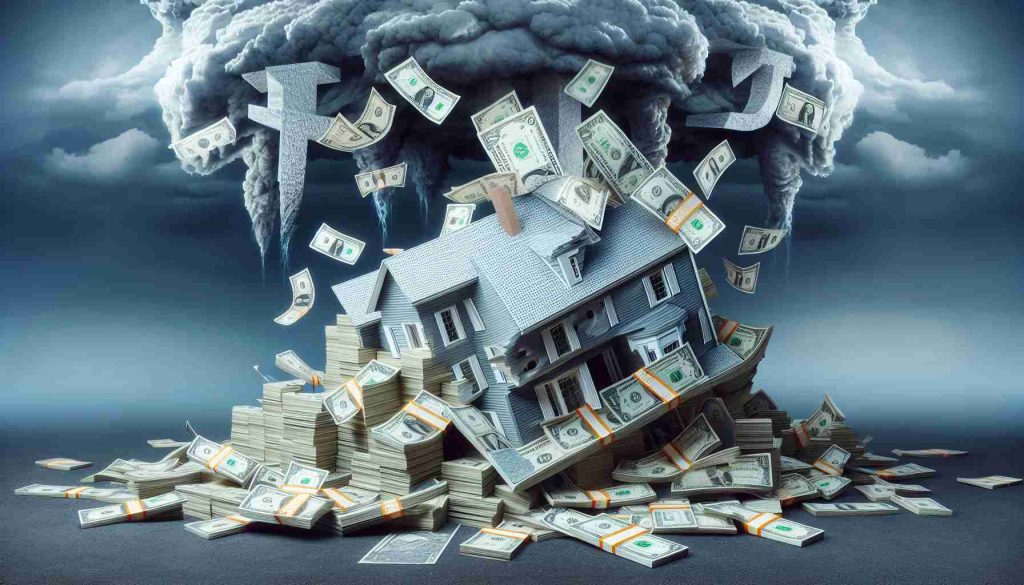- The U.S. housing market faces significant challenges due to new tariffs on essential building materials.
- Home prices have surged over 40% since the pandemic, making affordability a pressing issue.
- The tariffs could increase construction costs by $3 billion to $4 billion, further driving up home prices.
- Approximately 30% of softwood lumber and gypsum wallboard used in the U.S. is sourced from Canada and Mexico, respectively.
- A shrinking construction labor force, partly due to immigration policies, exacerbates the affordability crisis.
- Smaller builders could struggle the most under increased costs, impacting the overall housing supply.
- There is potential for Congressional action to stimulate entry-level construction amidst this economic turmoil.
The U.S. housing market is teetering on the edge as new tariffs threaten to drive home prices even higher. President Trump’s recent move to impose a crippling 25% tariff on essential building materials from Canada and Mexico is raising alarm bells among prospective homebuyers.
With home prices already soaring over 40% since the pandemic, buyers are feeling the pinch. Approximately 30% of the softwood lumber used in the U.S. comes from Canada, while Mexico is the primary source for gypsum wallboard. The tariffs could inflate construction costs, sending ripples through the market and pushing homeownership further out of reach for many.
Industry experts warn that these tariffs could worsen the affordability crisis for first-time buyers. Additionally, as the construction labor force shrinks due to mass deportations, the situation escalates. More than 30% of construction workers are immigrants, and their exit could further strain the market.
The potential fallout is staggering: tariffs could escalate construction costs by $3 billion to $4 billion, squeezing smaller builders and ultimately leading to higher home prices for consumers. Major builders will also face challenges, impacting their ability to deliver new homes.
As the housing landscape shifts under these economic strains, buyers must brace for the crushing reality that homeownership is becoming less attainable. In this climate of uncertainty, there’s hope that Congress may act to stimulate entry-level construction and alleviate the mounting pressures.
Stay informed and prepared—this housing market is about to get tougher!
Is the U.S. Housing Market Heading for a Crisis? Learn What You Need to Know!
The State of the U.S. Housing Market Amidst Tariffs
The recent imposition of a 25% tariff on vital building materials sourced from Canada and Mexico is causing ripples in the U.S. housing market. Home prices have skyrocketed by over 40% since the onset of the pandemic, exacerbating the already severe affordability crisis for prospective buyers. Tariffs are being viewed as a significant threat to an already strained construction industry, which could lead to further increases in home prices and heightened hurdles for first-time buyers.
# Key Insights on Tariffs and Their Impact
1. Increased Construction Costs: The tariffs are expected to lead to an increase in construction costs by $3 billion to $4 billion. This financial burden disproportionately affects smaller builders who may not have the cash flow capabilities to absorb such expenses.
2. Labor Shortages: The construction industry is facing a labor shortage, worsened by the deportation of immigrant workers. More than 30% of the construction workforce is comprised of immigrants. Their exit from the labor market could lead to delays in construction timelines and, ultimately, fewer new homes being built.
3. Market Adjustments: As the market adapts to increasing costs and labor shortages, many industry experts predict that homeownership will become increasingly out of reach for a significant segment of the population.
Frequently Asked Questions
Q1: What are the expected consequences of the new tariffs on home prices?
A1: Experts predict that the imposition of tariffs could raise construction costs significantly, which may lead builders to increase home prices to maintain profitability. This escalation would further strain home affordability, especially for first-time buyers.
Q2: How do these tariffs affect small builders versus large corporations?
A2: Smaller builders are more vulnerable to the financial impact of the tariffs due to limited resources. Larger corporations, while still affected, might have more capital to absorb some of the increased costs, but they will also face challenges in maintaining profitability and meeting demand.
Q3: What are potential short-term strategies to mitigate the impact of these tariffs?
A3: Possible strategies could include lobbying for tariff exemptions on critical materials, increasing local sourcing of building supplies, and legislative measures to stimulate entry-level housing construction.
Related Trends and Insights
– Market Forecast: It’s crucial to keep an eye on home affordability trends in the coming months, as rising prices and low inventory could further complicate the market landscape.
– Innovations in Construction: The industry may look for innovative building techniques and materials that can offset the rising costs due to tariffs, including modular construction and green building practices.
– Predictions for Recovery: Analysts believe that a combination of policy changes and shifts in consumer demand could eventually stabilize the market, but the timeline remains uncertain.
Stay informed as this volatile housing market continues to unfold. For further insights and updates on housing trends, visit the National Association of Realtors at nar.realtor.
